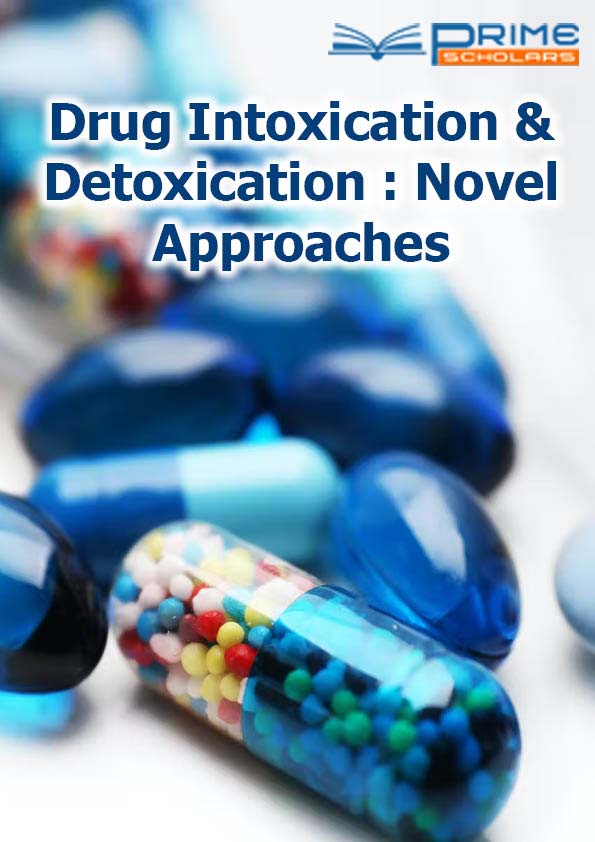Perspective - (2025) Volume 6, Issue 1
The Silent Epidemic: Unravelling the Crisis of Overdoses
Isabella Rossi*
Department of Drugs, University of Oxford, UK
*Correspondence:
Isabella Rossi, Department of Drugs, University of Oxford,
UK,
Email:
Received: 13-Dec-2023, Manuscript No. DIDNA-24-18583;
Editor assigned: 16-Dec-2023, Pre QC No. DIDNA-24-18583 (PQ);
Reviewed: 02-Jan-2024, QC No. DIDNA-24-18583;
Revised: 05-Feb-2025, Manuscript No. DIDNA-24-18583 (R);
Published:
13-Feb-2025, DOI: 10.36648/DIDNA.6.1.41
Introduction
In the quiet shadows of our society, an insidious epidemic is silently wreaking havoc on communities and families the overdose crisis. The harrowing statistics paint a grim picture, revealing a stark reality that demands urgent attention and comprehensive solutions. As we grapple with the complexities of this issue, it is imperative to delve into the root causes, dispel misconceptions, and explore avenues for prevention and support. The overdose crisis has reached staggering proportions, with thousands of lives lost annually to the clutches of substance abuse. The most recent data reveals a shocking figure an estimated 93,000 overdose deaths in the United States in 2020 alone. This number is not a mere statistic; it represents mothers, fathers, siblings and friends whose lives were cut short, leaving behind a trail of grief and unanswered questions.
Description
To effectively address the overdose crisis, we must first understand its complex root causes. Substance abuse often stems from a myriad of factors, including socioeconomic disparities, mental health issues and the pervasive stigma surrounding addiction. The rise of potent synthetic opioids has exacerbated the problem, leading to an increased risk of overdose. Addressing these root causes necessitates a holistic approach that combines public health initiatives, mental health support and targeted interventions to break the cycle of addiction. One common misconception surrounding overdoses is the notion that it only affects a certain demographic or socio-economic class. However, the crisis knows no boundaries it permeates communities rich and poor, urban and rural. Substance abuse does not discriminate and anyone can find themselves ensnared in the vicious cycle of addiction. Dispelling these misconceptions is crucial in fostering empathy and understanding, reducing the stigma associated with addiction and promoting a more compassionate approach to those struggling with substance abuse. Education emerges as a powerful tool in preventing overdoses. Comprehensive drug education programs, starting from early school years, can equip individuals with the knowledge and skills necessary to make informed decisions about substance use. Beyond traditional classroom settings, community outreach programs and public awareness campaigns play a pivotal role in disseminating information about the risks associated with different substances. By fostering a culture of awareness, we empower individuals to make healthier choices and build resilience against the allure of drugs. One of the critical challenges in combating the overdose crisis lies in ensuring that individuals have access to effective and affordable treatment options. Expanding mental health services and substance abuse treatment facilities is paramount. Additionally, addressing the barriers to seeking help, such as the stigma attached to addiction, can encourage more individuals to take the crucial step towards recovery. Public and private sectors must collaborate to invest in and expand treatment options, making rehabilitation accessible to those who need it most. Harm reduction strategies, including supervised injection sites and the distribution of naloxone (an opioid overdose reversal medication), have proven effective in saving lives. By acknowledging the reality of substance use and providing tools to mitigate its most severe consequences, harm reduction initiatives bridge the gap between addiction and recovery.
Conclusion
The overdose crisis demands our immediate attention, compassion, and a commitment to change. It is a societal ill that requires collective action, dispelling myths, educating the public and expanding access to treatment and harm reduction initiatives. By understanding the root causes, dispelling misconceptions and embracing comprehensive strategies, we can begin to turn the tide against this silent epidemic. Each life lost to an overdose is a call to action, urging us to prioritize empathy, education and effective interventions to safeguard our communities from the devastating consequences of substance abuse.
Citation: Rossi I (2025) The Silent Epidemic: Unraveling the Crisis of Overdoses. Drug Intox Detox: Novel Approaches. 6:41.
Copyright: © 2025 Rossi I. This is an open-access article distributed under the terms of the Creative Commons Attribution
License, which permits unrestricted use, distribution, and reproduction in any medium, provided the original author and source
are credited.
